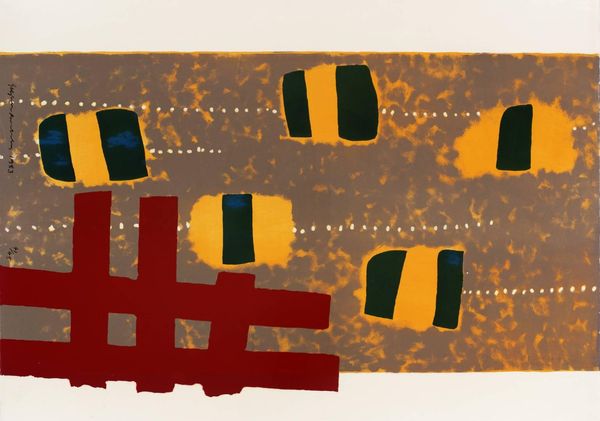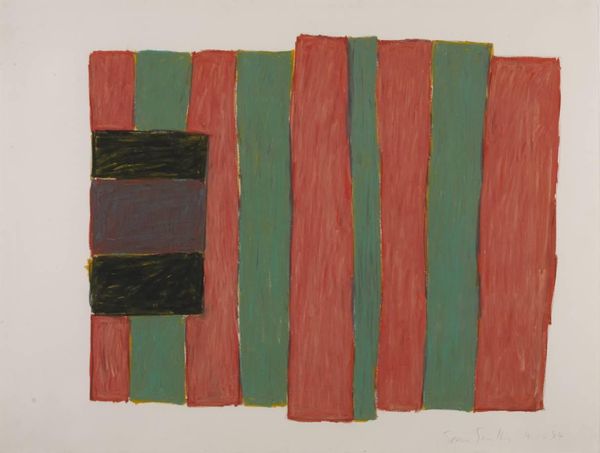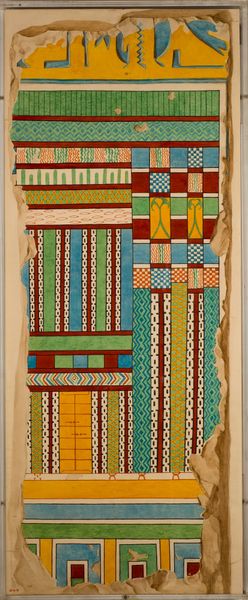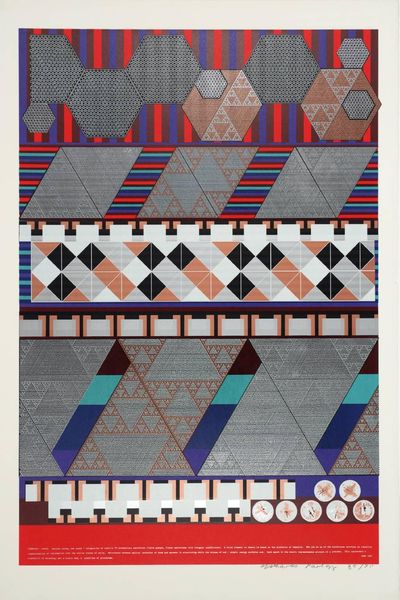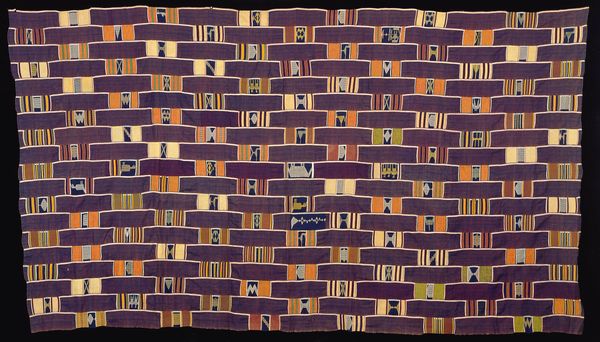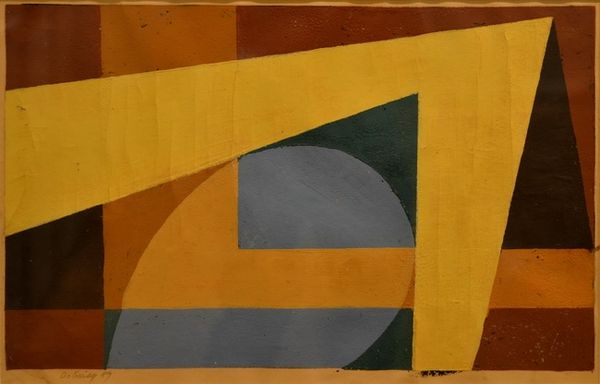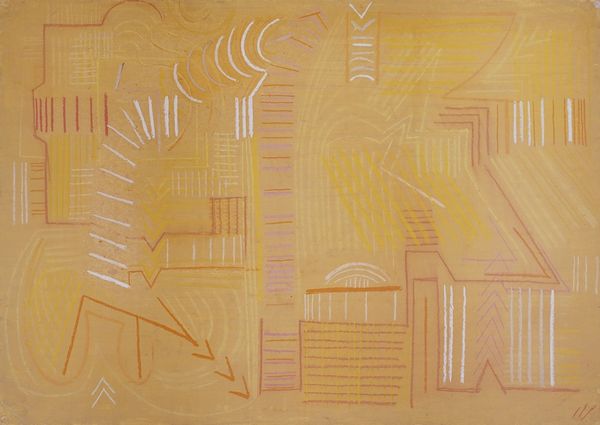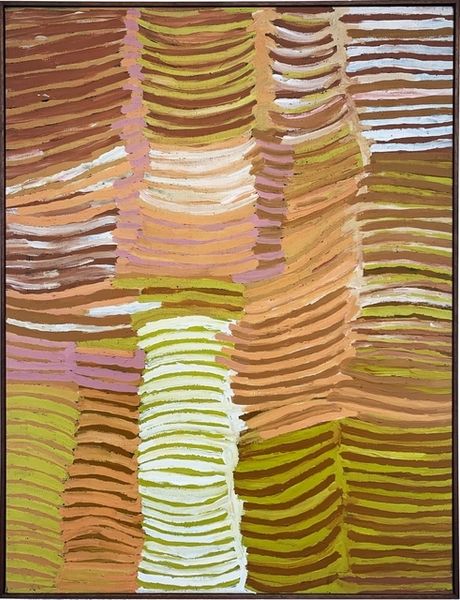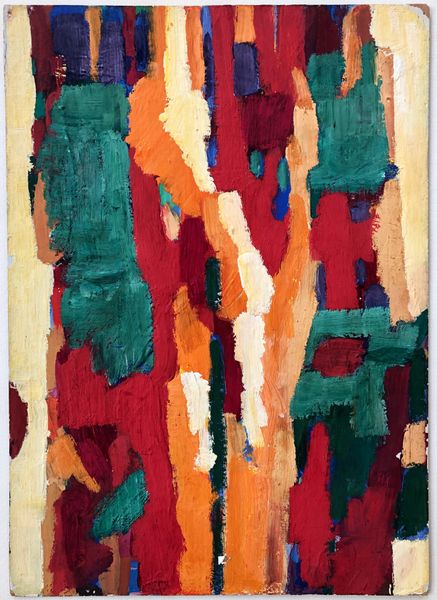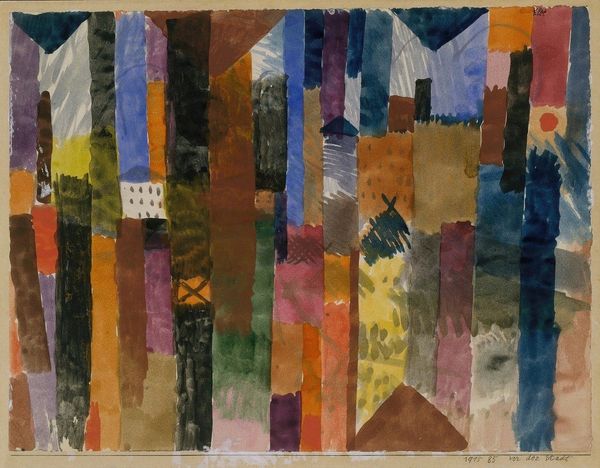
Dimensions: support: 1524 x 1829 x 70 mm
Copyright: © Stephen Buckley | CC-BY-NC-ND 4.0 DEED, Photo: Tate
Curator: Let's discuss Stephen Buckley's "Triptych," currently residing in the Tate collections. Editor: It strikes me immediately as playfully disruptive. The textures, the clashing geometries… it's almost confrontational in its cheerfulness. Curator: Buckley is known for challenging conventional painting, and this piece exemplifies that. The layered construction, the use of non-traditional materials... Editor: It feels almost like a commentary on the history of painting itself, deconstructing the very notion of a flat surface. The 'triptych' format feels ironic, referencing religious art while being utterly secular and abstract. Curator: Absolutely. It's crucial to consider the time in which Buckley was working – a period of intense questioning of artistic norms and institutions. He’s pushing back against established traditions. Editor: And visually, it’s so dynamic, those rhomboid shapes almost break free. It challenges us to question what we consider beautiful or acceptable within the confines of art. Curator: It's a potent example of how art can engage in a dialogue with its own history and broader cultural narratives. Editor: Leaving me pondering the role of joyful deconstruction in shifting the status quo.
Comments
Join the conversation
Join millions of artists and users on Artera today and experience the ultimate creative platform.
tate 8 months ago
⋮
Buckley's concern to expose the physical structure of a work can be seen in many of his paintings. In 'Triptych' this concern with structure and process was extended. The work demonstrates Buckley's wish, while making a painting, not to discard any materials but to employ all the intended components. Despite being composed of two units, 'Triptych' is so named because it originally consisted of three panels. During the making of the painting, these were dismembered and rearranged in order to create the work's present appearance. This idea also connects with the historical convention whereby triptychs were constructed so that they could be folded into a smaller format. Gallery label, September 2004


